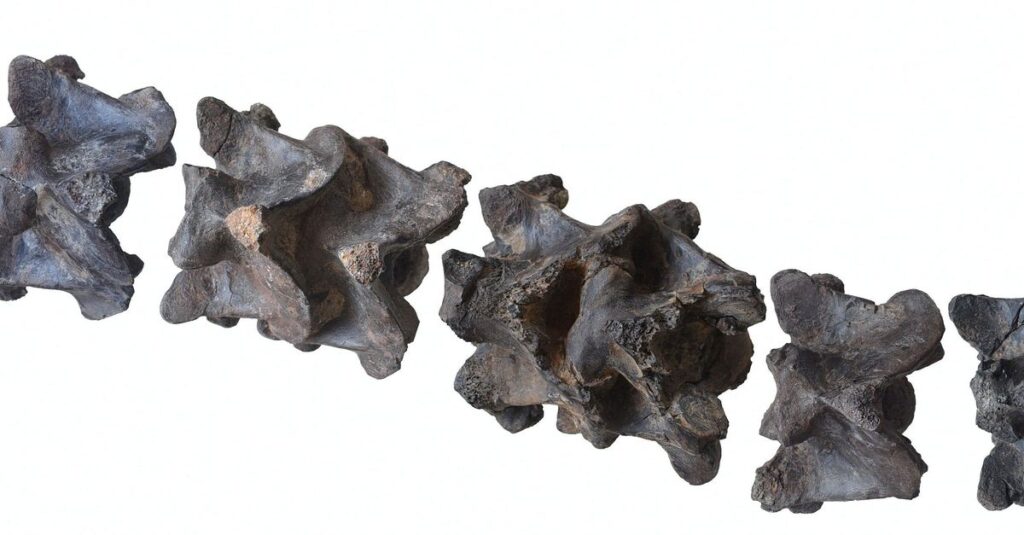Twenty-seven black-colored vertebrae the size of a human fist. These are the fossil remains that researchers found in the Panandhro open-pit lignite mine in the Kutch district of the western Indian state of Gujurat. They belonged to Vasuki indicus, a giant snake that lived 47 million years ago. The animal is estimated to have been eleven to fifteen meters long, making it one of the largest snakes that ever lived.
Indian paleontologists Debajit Datta and Sunil Bajpai of the Indian Institute of Technology in Roorkee write this in an article that appeared last week in Scientific Reports. Although the researchers have only recovered part of the snake’s skeleton (the head and tail are missing), they can still deduce a lot from the fossilized bones. They describe the snake as a new species: Vasuki indicus. The name refers to the mythical figure Vasuki, the king of all snakes who was worn as a necklace around his neck by the Hindu god Shiva.
Vasuki belongs to the so-called Madtsoiidae, a family of extinct constrictors that originated around 100 million years ago on the ancient continent of Gondwanaland.
The earliest fossil species from this family are known from Madagascar, South America, Africa, India and parts of Europe. From the Cenozoic, the geological era starting from 66 million years ago, the distribution of these primitive snakes is limited to North Africa, South America, India and Australia. Gradually they became extinct.
It is known of the Madtsoiidae that their skull (that of Vasuki is unfortunately missing) is not as flexible as that of modern constrictors such as boas and anacondas. As a result, despite their sometimes formidable body size, they were still unable to swallow large prey items.
Moreover, based on anatomy, Datta and Bajpai think that Vasuki was a snake that could only move slowly. For this reason, the animal probably had to surprise its prey from an ambush, after which they were strangled by the mighty body and eaten.
